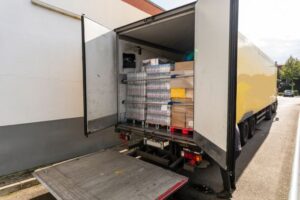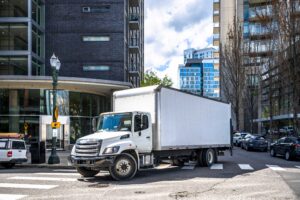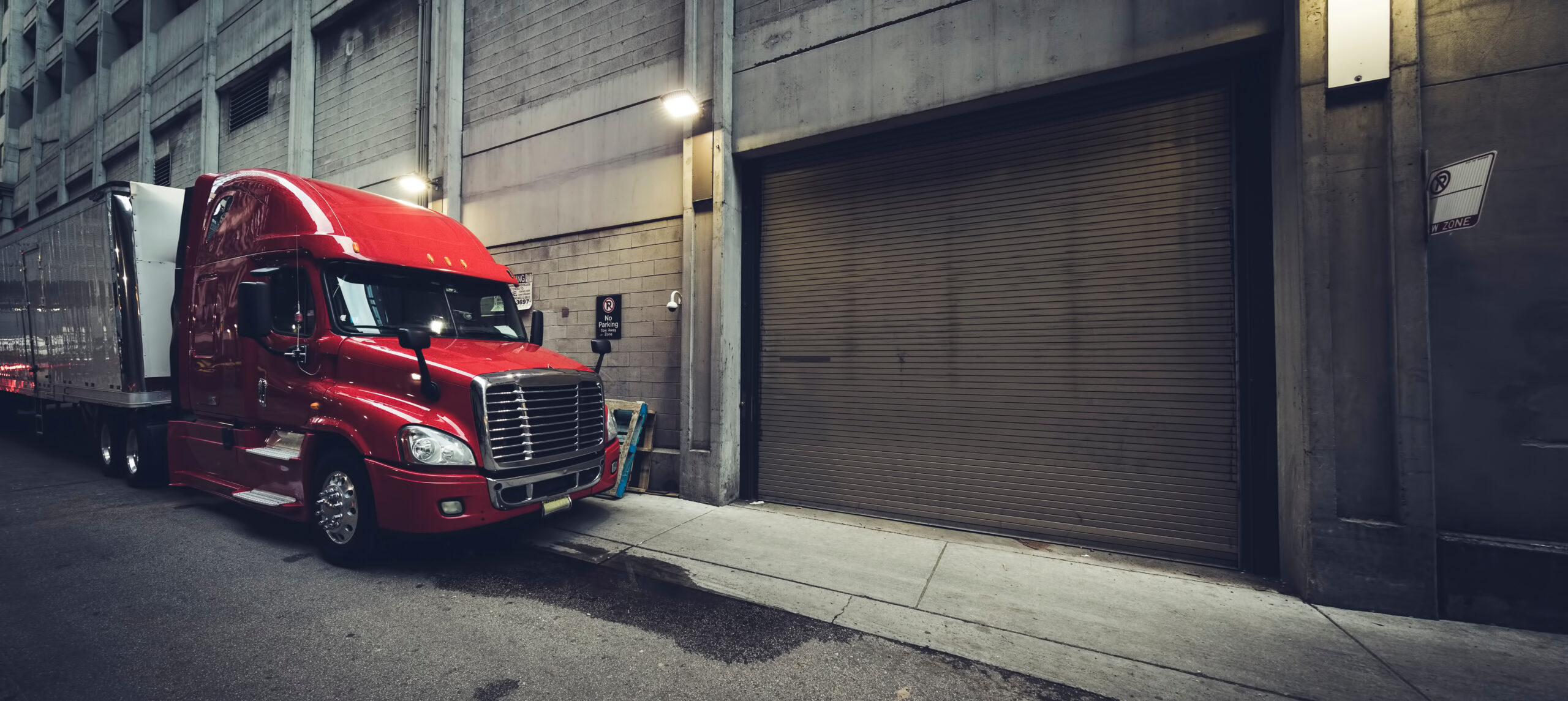For a city to exist, it needs an urban economy. For an urban economy to exist, there needs to be commercial trade. For commercial trade to exist, there needs to be commercial transportation. The most efficient and most economic commercial transportation in cities is provided by trucks. For a city to exist, it needs to have trucks. Trucking enables goods movement and makes urban economic activity possible.
 A city needs the trucks that bring food and groceries to retail stores and restaurants, that bring parts and materials to industrial manufacturers and processors, that bring materials to construction sites, and that make countless varieties of other pickups and deliveries.
A city needs the trucks that bring food and groceries to retail stores and restaurants, that bring parts and materials to industrial manufacturers and processors, that bring materials to construction sites, and that make countless varieties of other pickups and deliveries.
Milk is just one example of the hundreds of products that city dwellers use every day, all of which depend on trucks. Every day, 365 days a year, trucks with specialized trailers bring bulk milk from dairy farms into cities for processing. From there, the finished milk, ice cream, and other products are moved by trucks to retail stores, restaurants, and hotels, where it is available to consumers.
Trucks are moving more than commercial goods: there are the fire trucks, the garbage and recycling trucks, the service and repair trucks for buildings and infrastructure, and the dump trucks to remove snow. All of these trucks need to be considered when planning decisions are made, whether in changing the road network or in developing property.
Truck Routes
All trucks depend on a city’s road network to move efficiently and safely. In most cities, numerous arterial and collector streets are legally designated as truck routes. Combined, they form a trade and transportation network that connects buyers and sellers, consumers and suppliers, allowing the economy to function and enabling cities to persist as places to live.
Traffic Flow
Trucks may only comprise a small fraction of the total traffic volume on an urban road network, but they are vital to every city, including Winnipeg. Trucks typically comprise about 5% of city traffic, but on some road segments the volume share can be higher, depending on the street. There are many configurations of trucks moving in traffic, but most are either tractor-trailer combinations, or fixed-chassis trucks with no articulation point – commonly referred to as straight trucks.
 It is more common for tractor-trailers to use major arterial routes, but this is not always the case – it depends on what is being delivered, where it is being delivered, and finding the safest and most efficient route to get it there. Straight trucks tend to use a wider variety of routes because of the wider variety of locations where deliveries are made, and the frequency of those deliveries.
It is more common for tractor-trailers to use major arterial routes, but this is not always the case – it depends on what is being delivered, where it is being delivered, and finding the safest and most efficient route to get it there. Straight trucks tend to use a wider variety of routes because of the wider variety of locations where deliveries are made, and the frequency of those deliveries.
Integration with Land Use
Transportation is the land use that serves all other land uses, and nothing is more important to this function in cities than trucks. Every property and every building need to be accessible by truck, even if city planners don’t recognize it. Pickups and deliveries happen at any scale on the map, whether a truck delivers goods from one block away, from the other side of the city, or from well outside the city’s boundaries.
The Property Tax Connection
Keeping properties accessible for pick-ups and deliveries by truck, especially commercial and industrial properties, is essential to maintaining the value of those properties. If changes to the streets make it harder for trucks to access commercial properties, then pickups and deliveries become less efficient and more expensive.
If it gets harder to pick up and deliver goods, especially to commercial and industrial properties, those properties become less attractive for business tenants, and less valuable in the property market. Why is this important? Because property taxes are the biggest source of revenue for cities, and those taxes are based on the property’s value. If a property’s value declines, then the city collects fewer tax dollars from that property.
This is why trucking in the city needs to be kept as safe and efficient as possible: it is valuable not only for the trucking industry and its customers, but also to the city itself.
The Policy Connection
For the reasons described above, cities need to do a better job of protecting the functionality of truck routes. This means not removing traffic lanes, keeping those lanes safe by not making them narrower or multi-purpose, keeping the lane markings freshly painted, and keeping the pavement in good condition.
It means trimming overhanging tree branches so that traffic lights and pedestrian crosswalk signs are visible. It means not building raised sidewalks at intersections, because they reduce the stability of loads when trucks need to make turns. The same thing is true for traffic circles and roundabouts: no truck driver ever wants to go over a curb if they can help it. Calling the edge of the inner roundabout circle a “mountable curb” or a “truck apron” does not change the risk that it presents.
It also means that cities need to protect the location and functionality of loading zones. Many retailers and restaurants do not have a back lane or loading dock access. They must rely on curb access loading zones for truck drivers to make pickups and deliveries. Changes to conventional street designs that remove such loading zones make it harder for drivers to do their jobs safely and efficiently, and it impairs the economic viability of these locations.
Without trucking, there are no stocked shelves at retailers or grocery stores. Local restaurants, pubs, and cafes would not have the supplies needed for success. Even the new trees for boulevards and parks are brought by truck. Trucking brings it all together, and for that basic reason, goods movement should never be overlooked in urban planning or design.

